Foram Shah

Sem 09 | Repair and Retrofit
Reorienting ‘Repair of Houses’ to ‘Repair of Inhabitation’
The housing question in India has been conventionally articulated as ‘shortage of houses’ and the responses have been through strategies of building new standard houses. However, despite more than 50 years of housing provisioning strategies, the 'shortage' has only increased. Moreover, the rate of production of new houses has also been only a fraction of the shortage. The statistics that speak about shortage also note another thing - that almost all people have houses, but they are ‘inadequate’ in terms of facilities, infrastructure and vulnerabilities. This dimension of the housing problem would then prompt strategies for ‘removing inadequacies’ or improving existing houses, rather than building new houses. However, across India, there are no courses in architectural and engineering schools that build capacities in improving existing houses. With such a context, SEA has been engaged in research towards developing courses in improving houses through repairing and retrofitting them. In the course of the research, it was found that there already exists huge capacity and enterprise amongst non-formally trained artisans and contractors to undertake this and households are constantly involved in upgrading their houses. However, these improvements have largely been utilitarian and engineering oriented with very little emphasis on spatial dimensions.
Moreover, the upgradation processes have been diametrically opposite to the conventional modern processes of building that are taught in architectural and engineering schools - while the schools teach a linear system of procuring land and finances, making designs and specifications, undertaking tendering and contracting, etc.; the upgradation process involved negotiations, opportunism, wait-and-watch, cross-mobilizations, etc. Based on this finding, this year, SEA decided to develop a course titled ‘Repair of Inhabitation’, with twin agenda - first, to focus on the spatial dimensions of repair, and second, to focus on exploring alternative processes of repairing. Premised around the ideas of life, living and the everyday, the course intended to explore the spatialities involved in repairing life, living and the everyday. As the COVID year had already pushed SEA to articulate around the ideas of ‘self as field’ where one's own life, home and neighbourhood were being explored and experimented with; this studio focused on repairing one’s own inhabitation. While the studio allowed a thorough interrogation of the space-life morph, it also generated a sense of high diversity in kinds of inhabitations that existed in cities. The explorations that followed ranged from altering intimacies, subverting power structures, creating spatial opportunities for publicness and privacies, improving efficiencies; realising absurd desires and more.
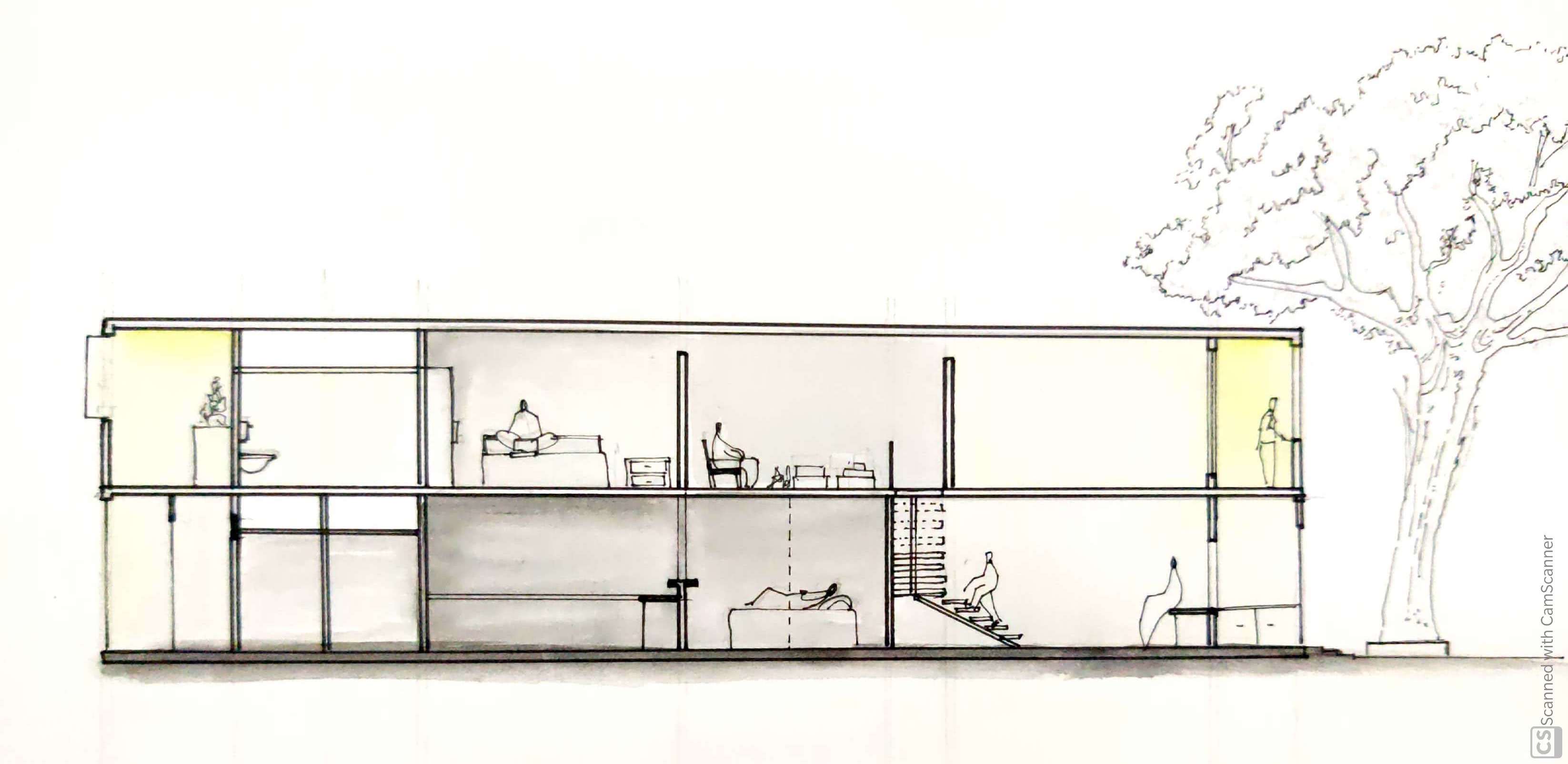
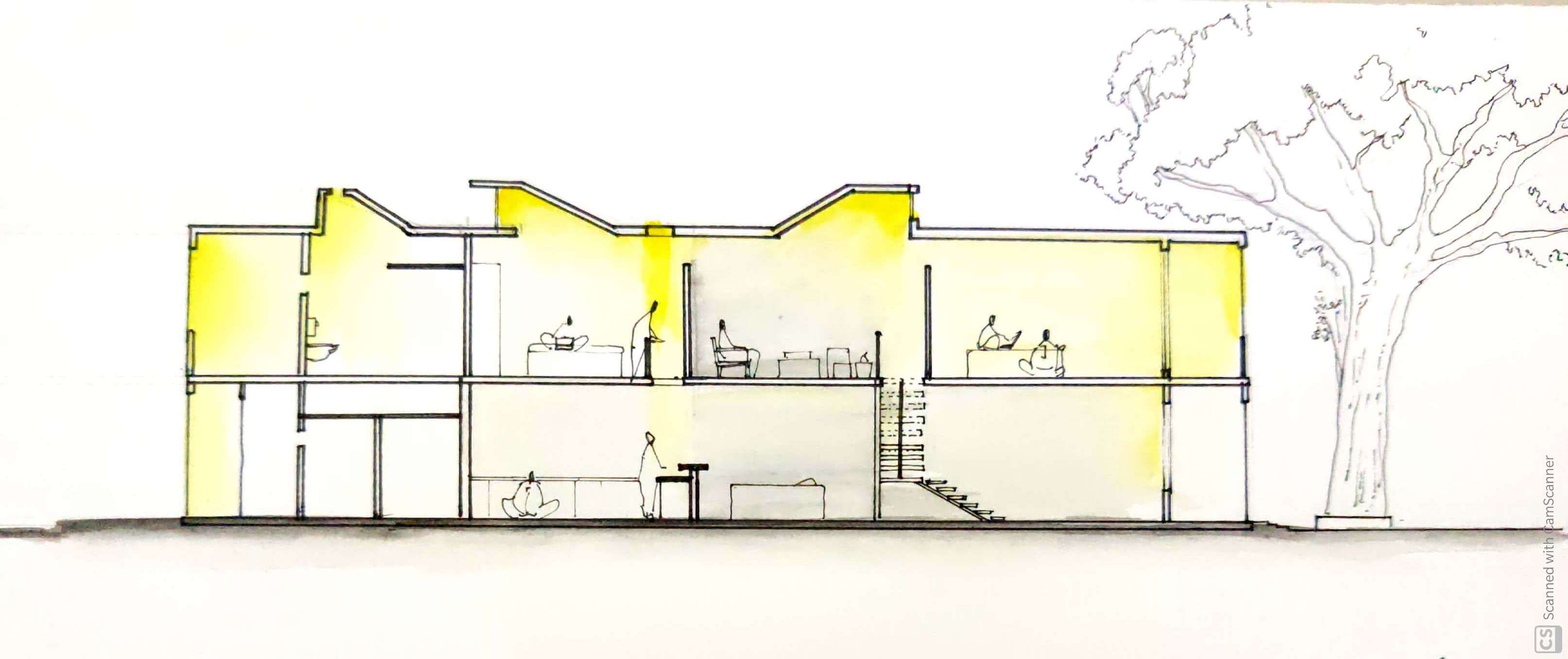
In a row house the only source of light and ventilation is from the front and back of the house. Light and ventilation is brought into the house through adding skylights in the roof.
Anshuli Kadam
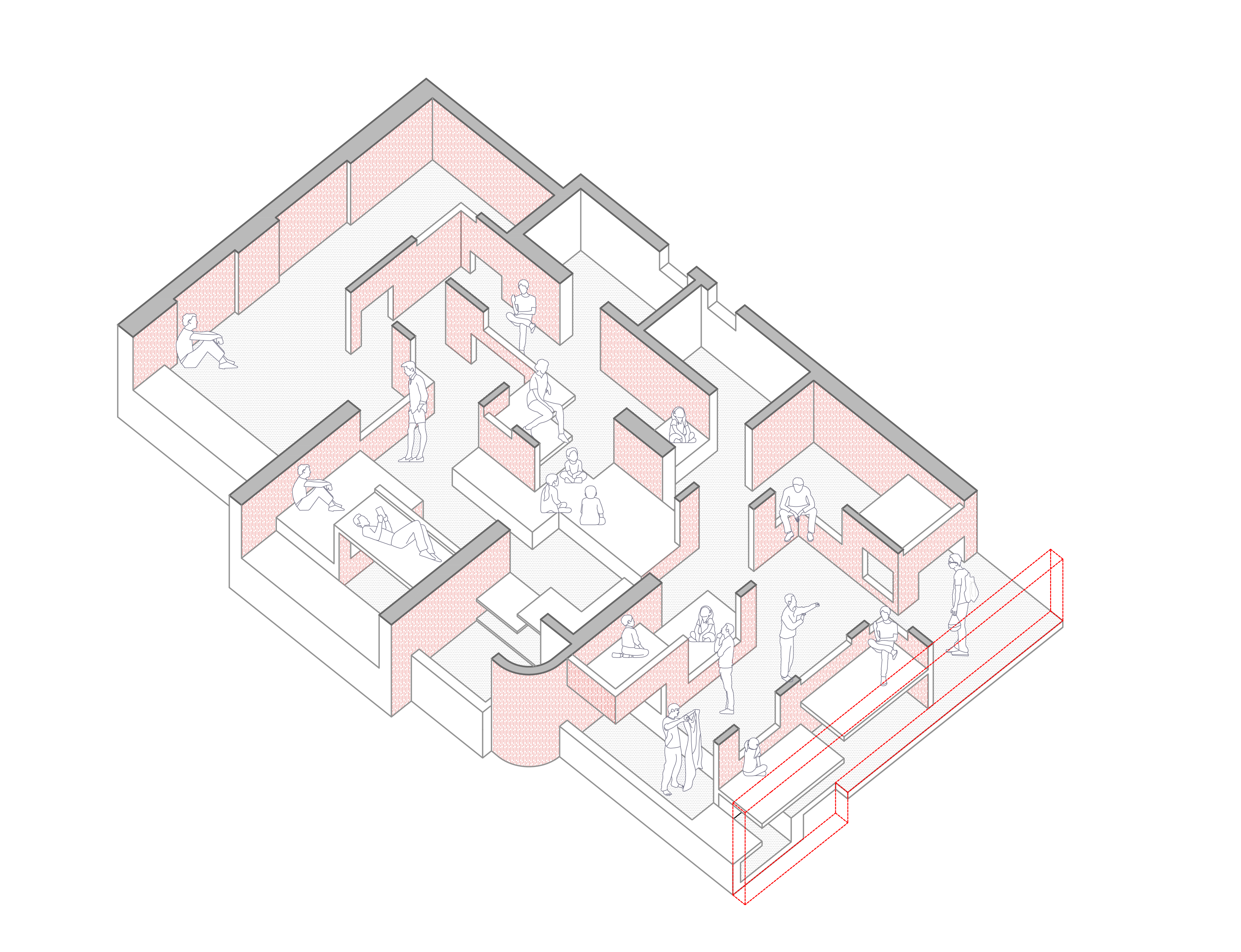
Aditya Verma
Personal autonomy becomes difficult to attain in a joint family living in an apartment. I developed a new series of walls, forming new layers in the house, an internal offset. While these layers create private pockets, they easily lend themselves for the collective to happen.
Personal autonomy becomes difficult to attain in a joint family living in an apartment. I developed a new series of walls, forming new layers in the house, an internal offset. While these layers create private pockets, they easily lend themselves for the collective to happen.
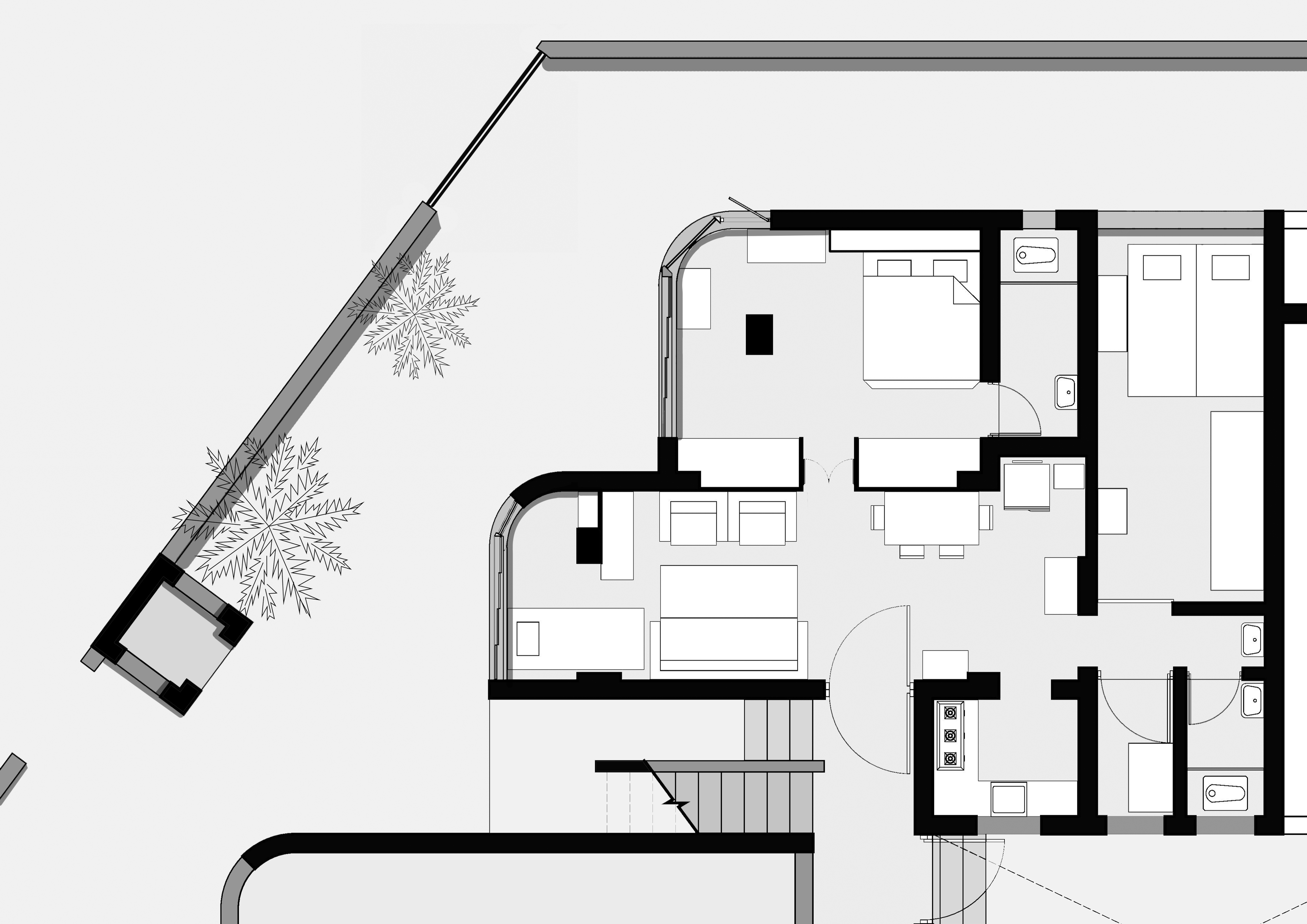

Ashwin Gupta
Events on the street draws one to inhabit the edge of the apartment. However, in the existing house, the form of the edge limits these engagements. Hence this project corrodes the edge of a ground floor apartment in order to ease the flow from the inside and the outside, affording multiple possibilities.
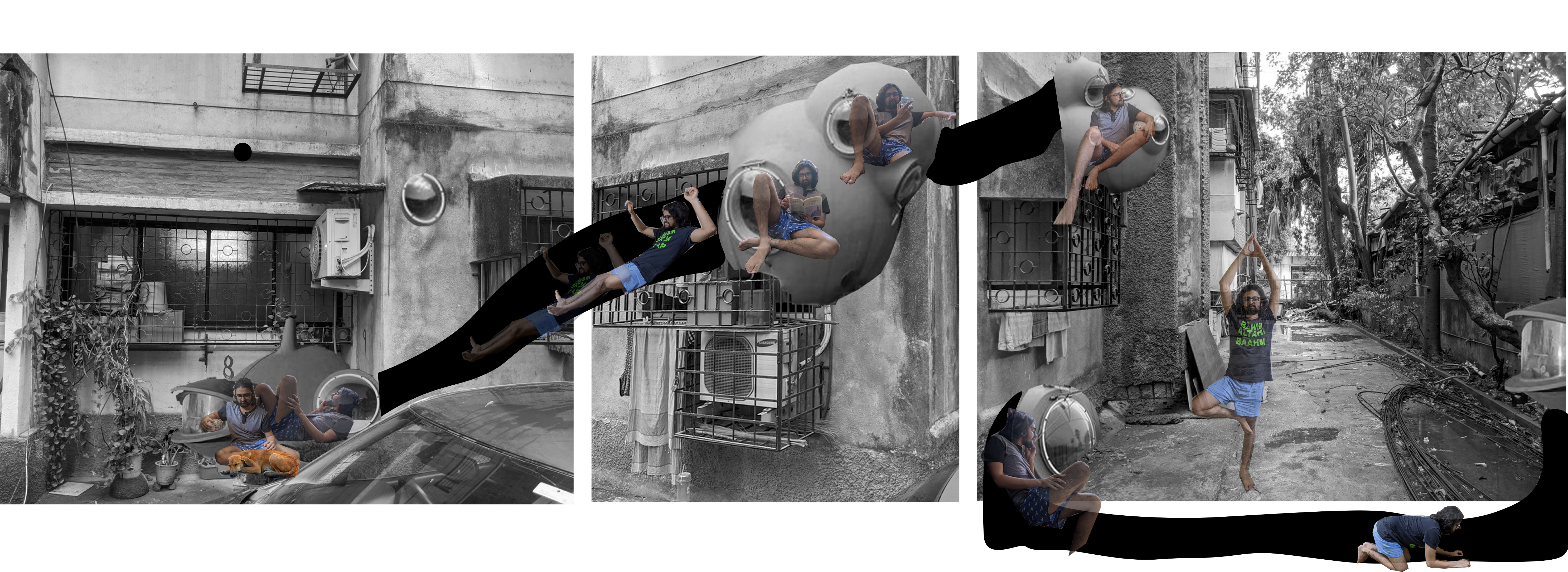
Living inside an one bedroom apartment during the lockdown pushed me to think of how I could find escapes within the house. Thus the idea of various escape pods to the activities that I could never do within with everyone being around
Devarsh Sheth
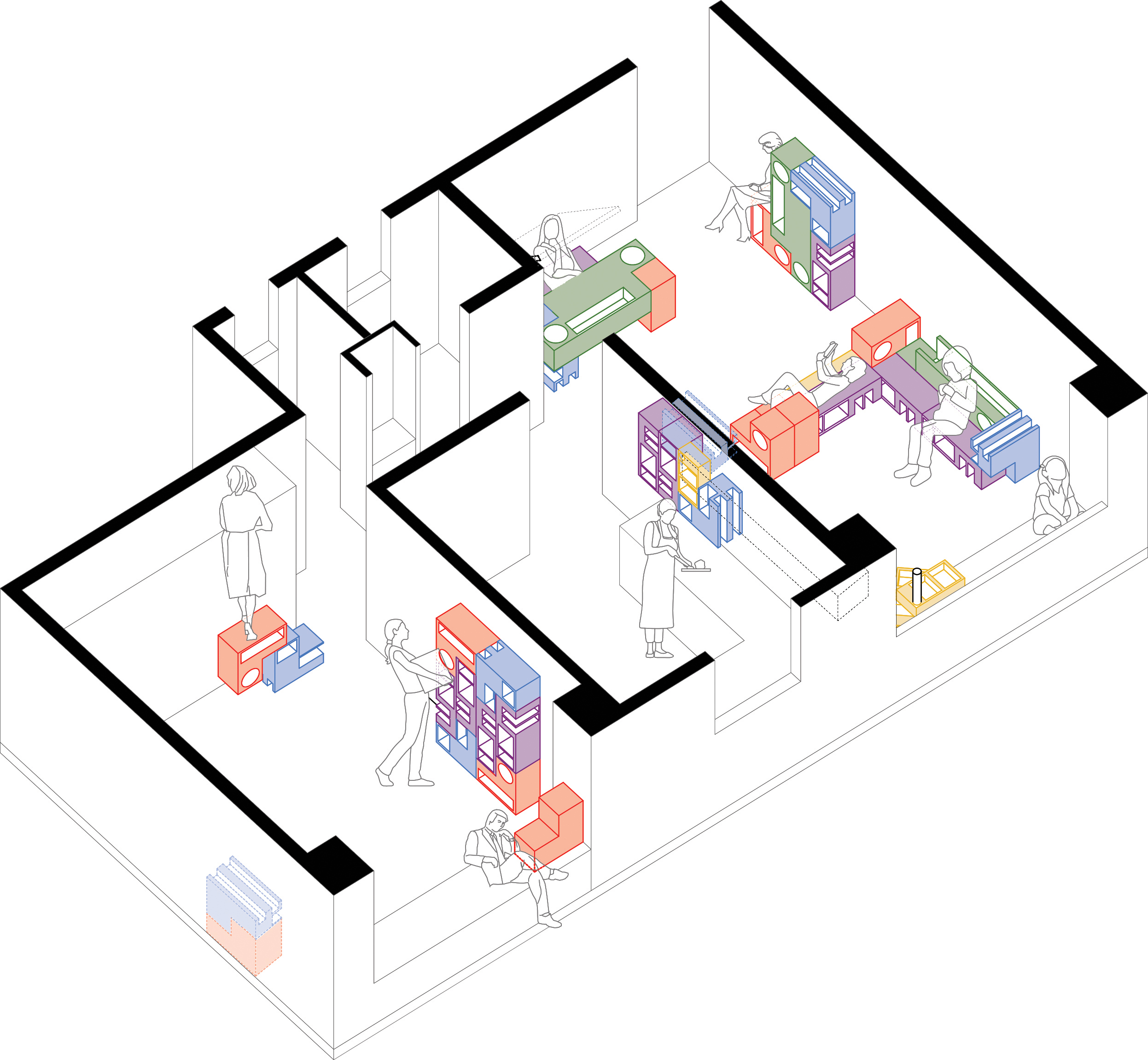
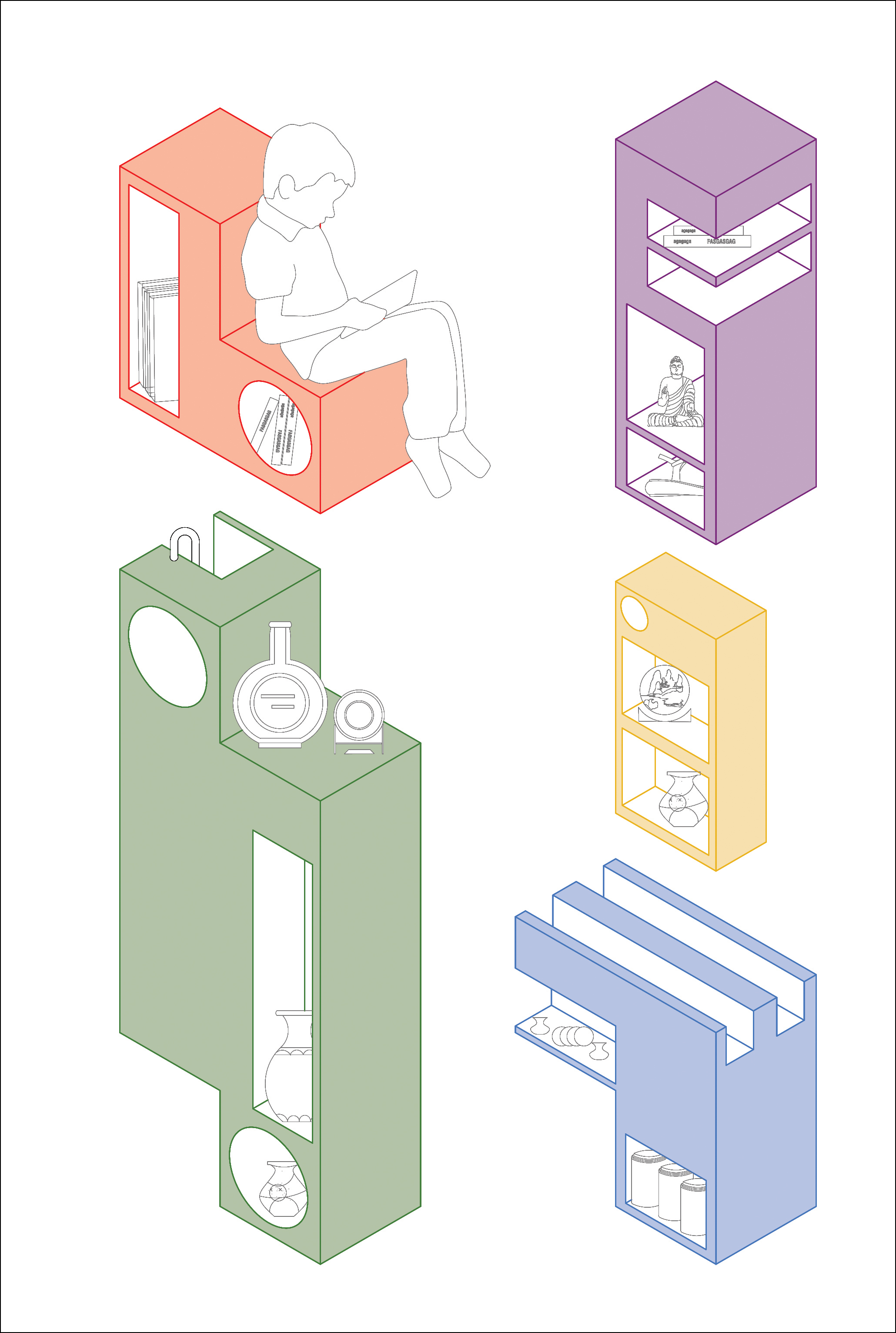
Foram Shah
This proposal includes a set of five multipurpose furniture modules, that can be put together in multiple ways to become a table, chair, sofa, wardrobe, leg rest and other things in a small house.
Maitreyee Rele
The presence of bulky cupboards and innumerable places to infinitely store things were defining most of my lived experiences in the house. These stored objects had a life to them, like Walter Benjamin would say, “Not that they (the objects) come alive in him, but he who comes alive in them.” Through my drawings I was trying to explore the infinity of space and the multitude of forms that are created by merely exhibiting the objects without the framework of a rigid cupboard.
The presence of bulky cupboards and innumerable places to infinitely store things were defining most of my lived experiences in the house. These stored objects had a life to them, like Walter Benjamin would say, “Not that they (the objects) come alive in him, but he who comes alive in them.” Through my drawings I was trying to explore the infinity of space and the multitude of forms that are created by merely exhibiting the objects without the framework of a rigid cupboard.

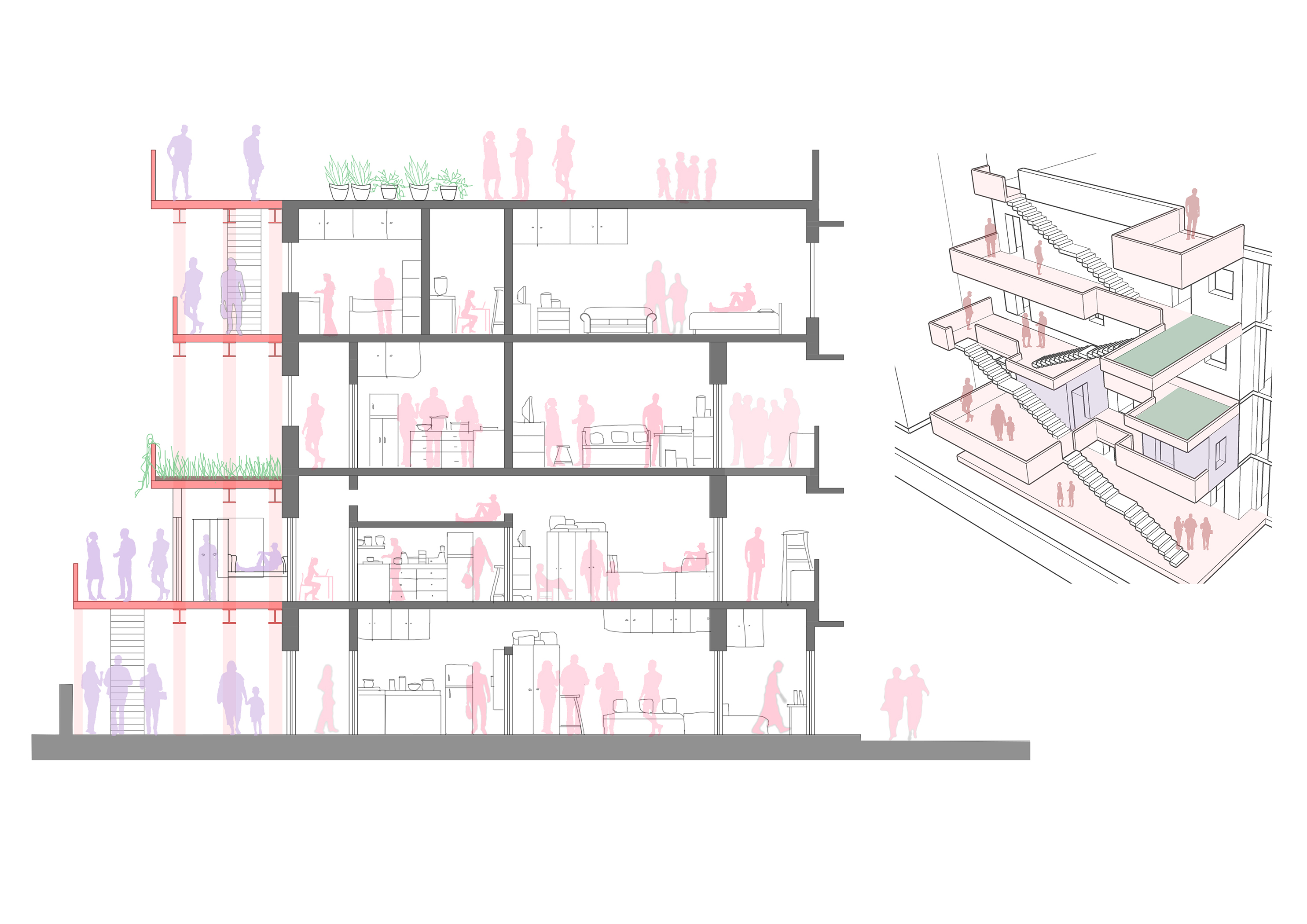
Priyanshi Bagadia
A jacket is put on the chawl building which has multiple extensions and plugins on both front and the backside formed at multiple levels. These extensions allow one to have their own private space as well as the comfort of the community life.
A jacket is put on the chawl building which has multiple extensions and plugins on both front and the backside formed at multiple levels. These extensions allow one to have their own private space as well as the comfort of the community life.
Saloni Vora
The hardness of furniture restricts movements and flexibility. This proposal looks at the possibility of making soft furniture that can easily move around and is capable of absorbing much more things than the hard ones.
The hardness of furniture restricts movements and flexibility. This proposal looks at the possibility of making soft furniture that can easily move around and is capable of absorbing much more things than the hard ones.
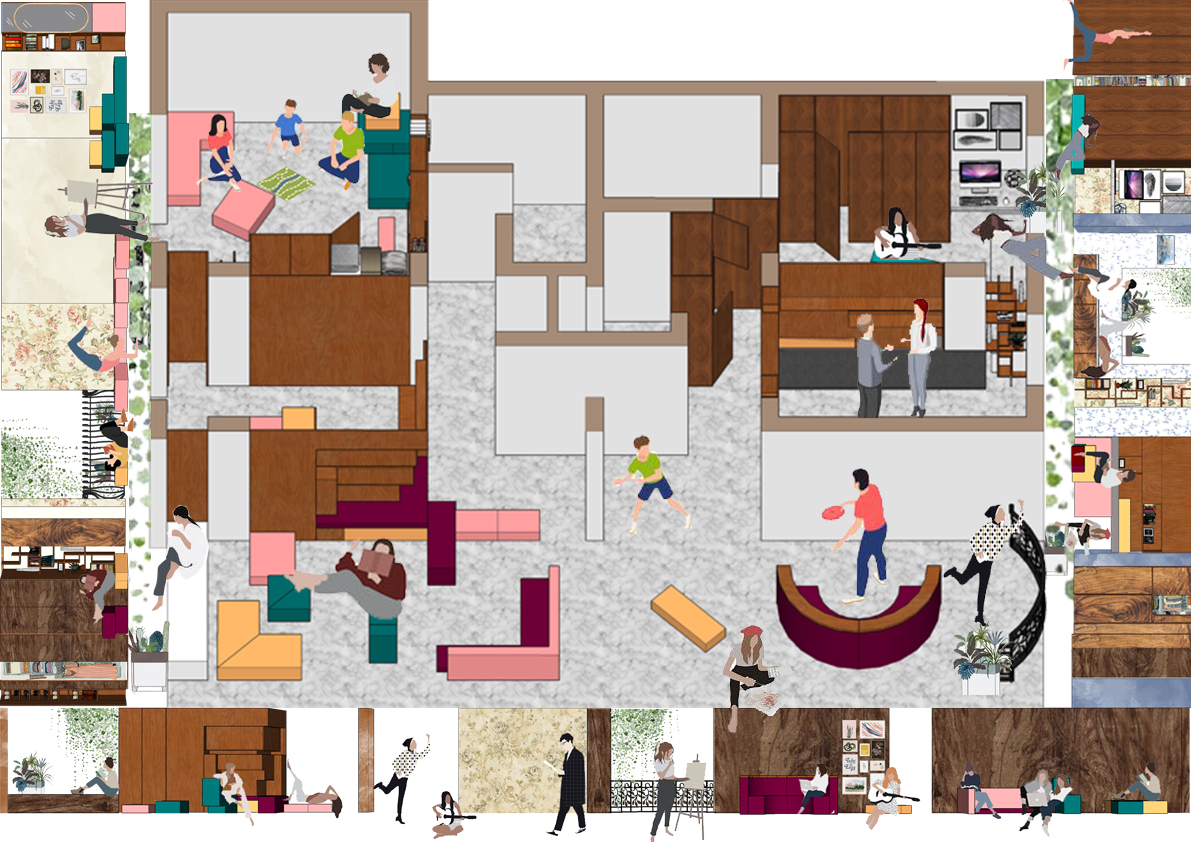
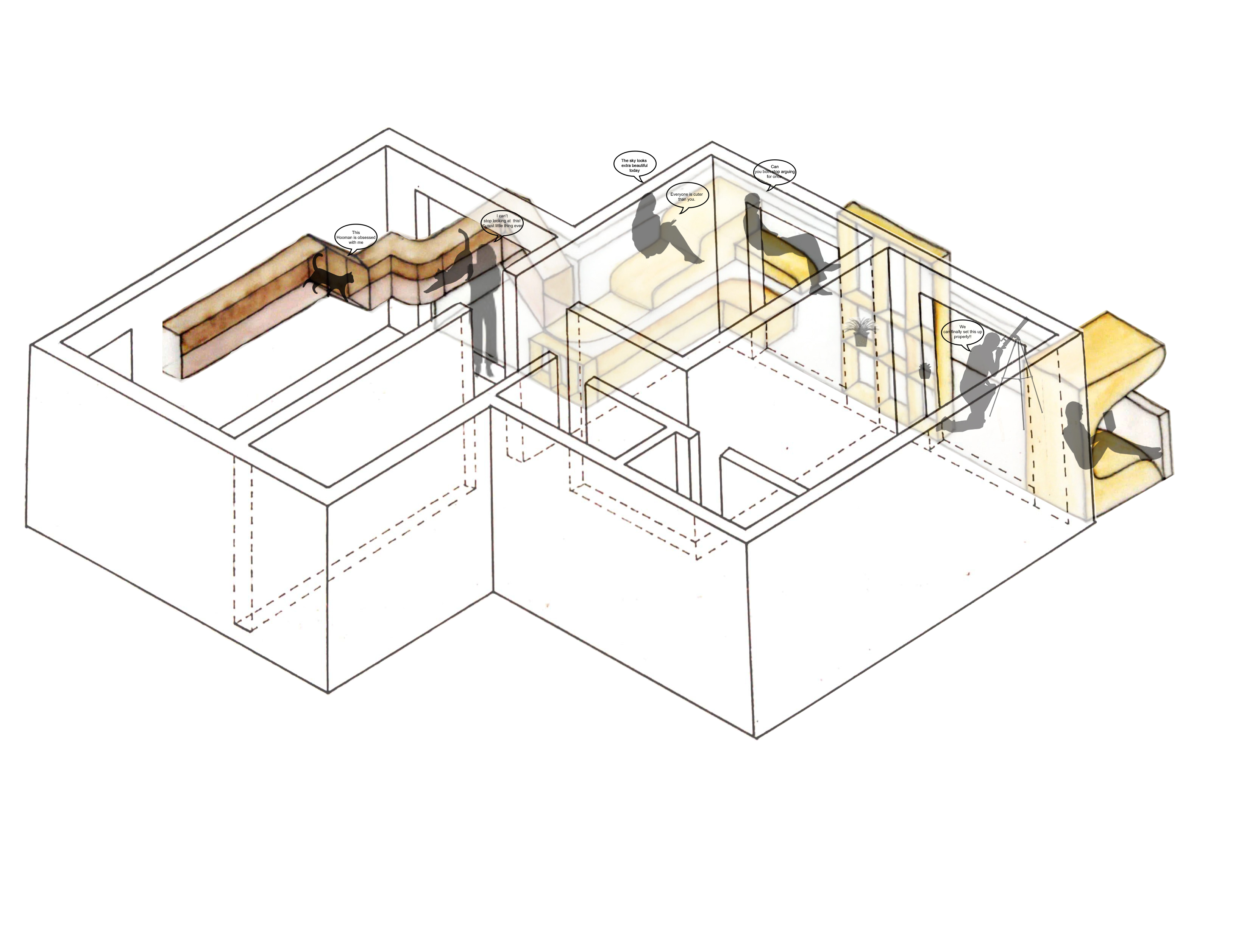
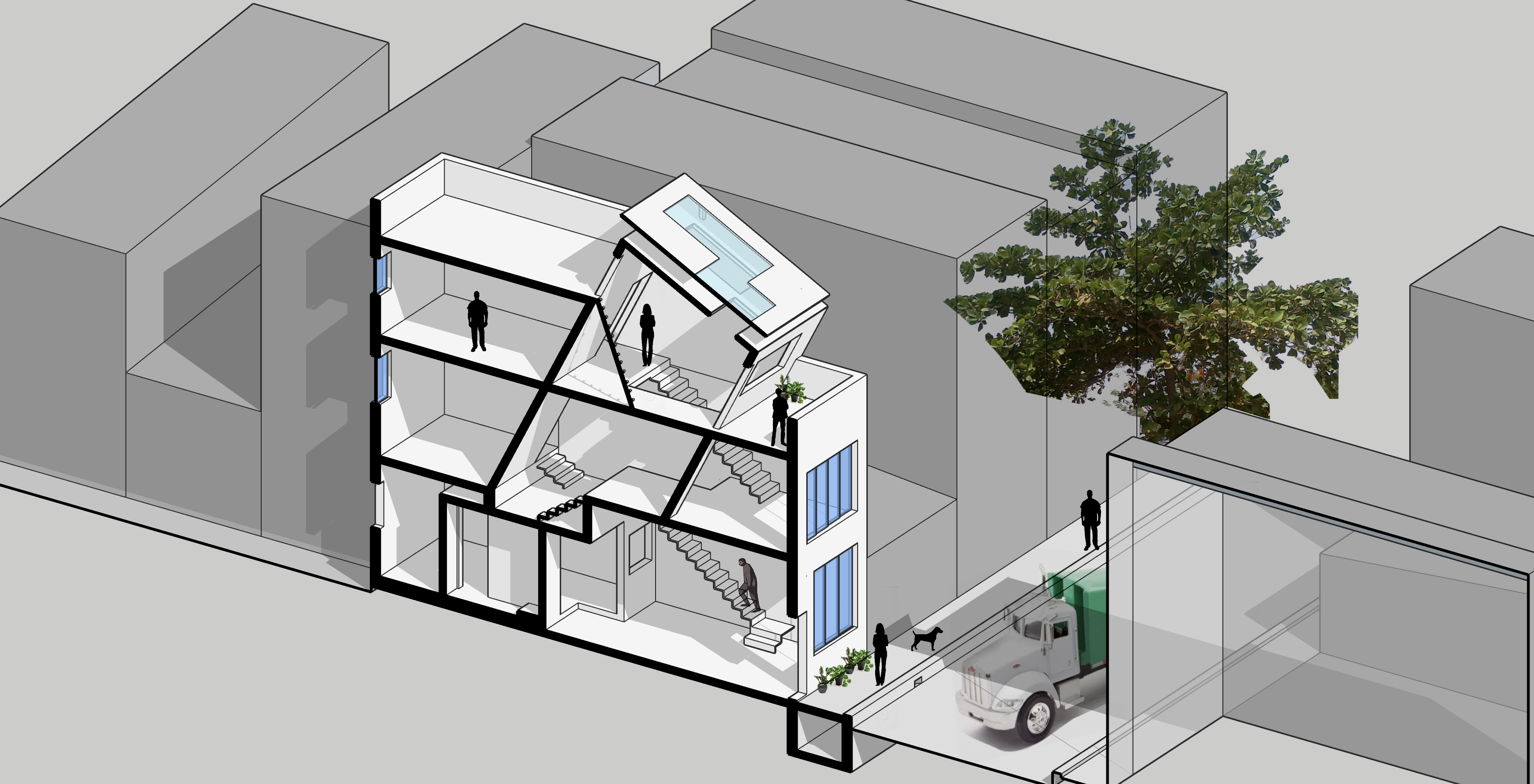
Simran Panchal
A pathway is introduced for a cat allowing it to navigate within the house without it touching the ground as one family member is scared of cats and the other wants the cat to be part of the house.
A pathway is introduced for a cat allowing it to navigate within the house without it touching the ground as one family member is scared of cats and the other wants the cat to be part of the house.
Soham Tondwalkar
The house is a part of a site and services scheme. It is a long tube of 38 ft with two mezzanine levels and a double height space. Most internal spaces are dark as the tube is open only from one short side. In repairing this house, another tube is introduced in the diagonal axis from roof to act as a light source.
The house is a part of a site and services scheme. It is a long tube of 38 ft with two mezzanine levels and a double height space. Most internal spaces are dark as the tube is open only from one short side. In repairing this house, another tube is introduced in the diagonal axis from roof to act as a light source.